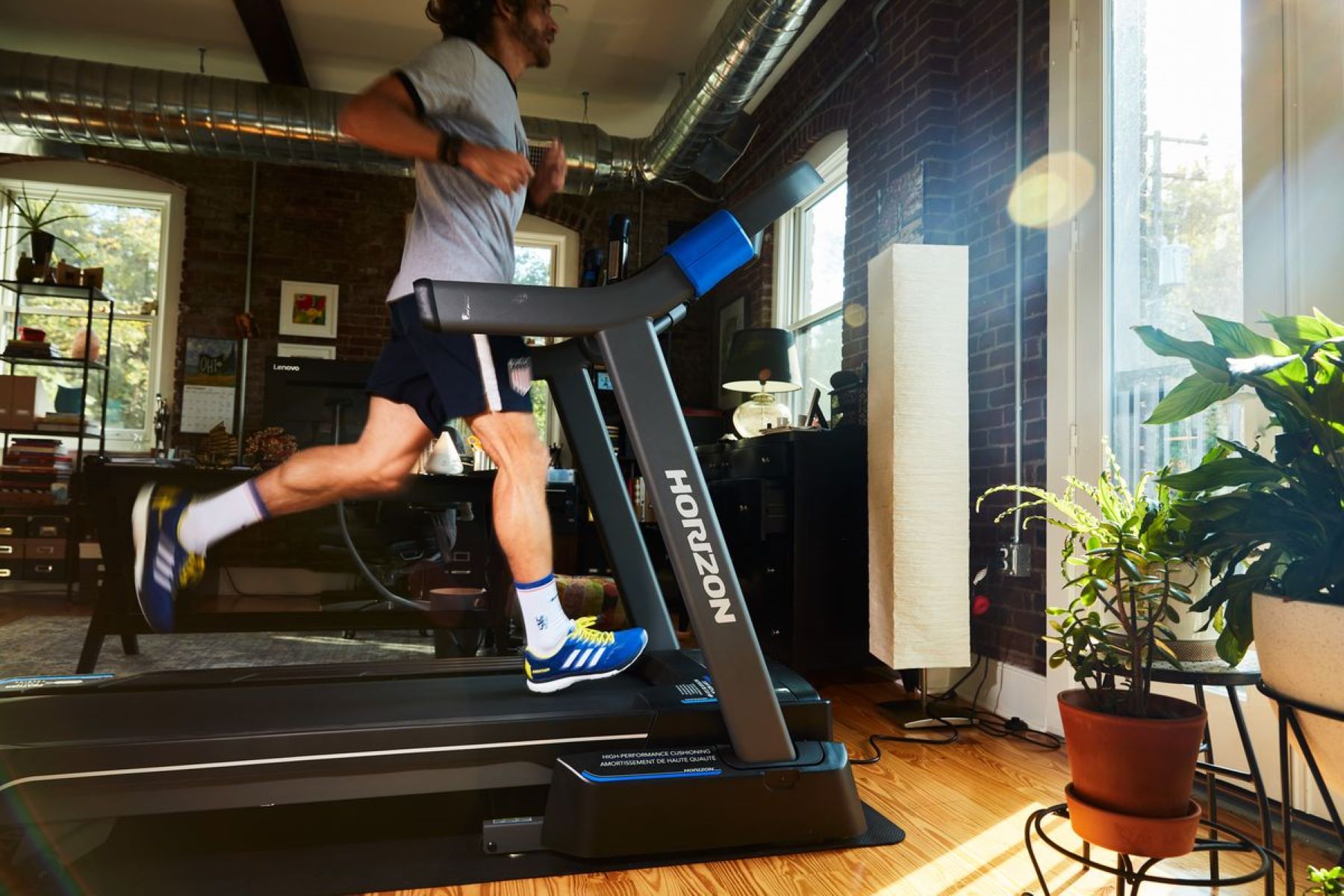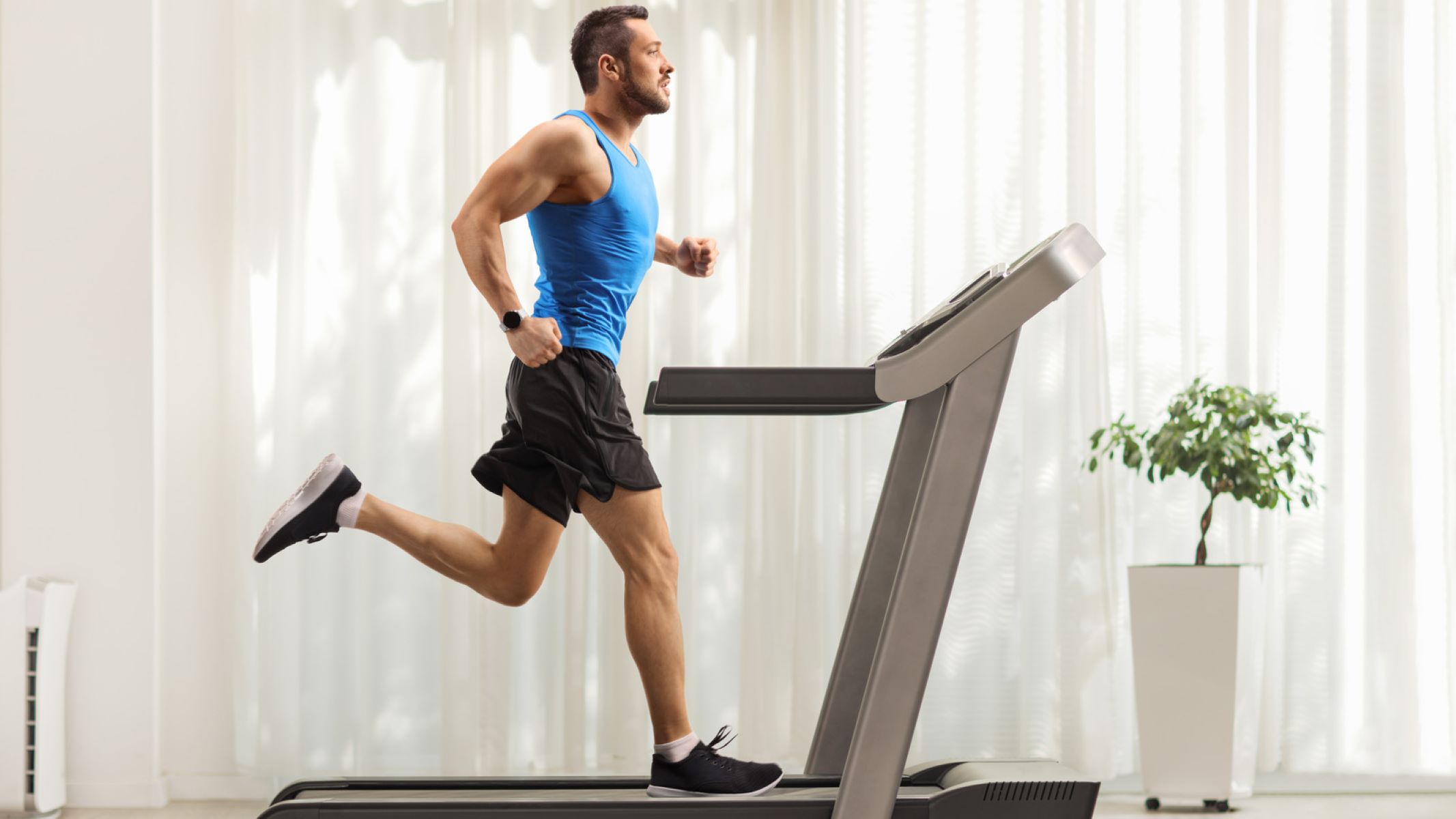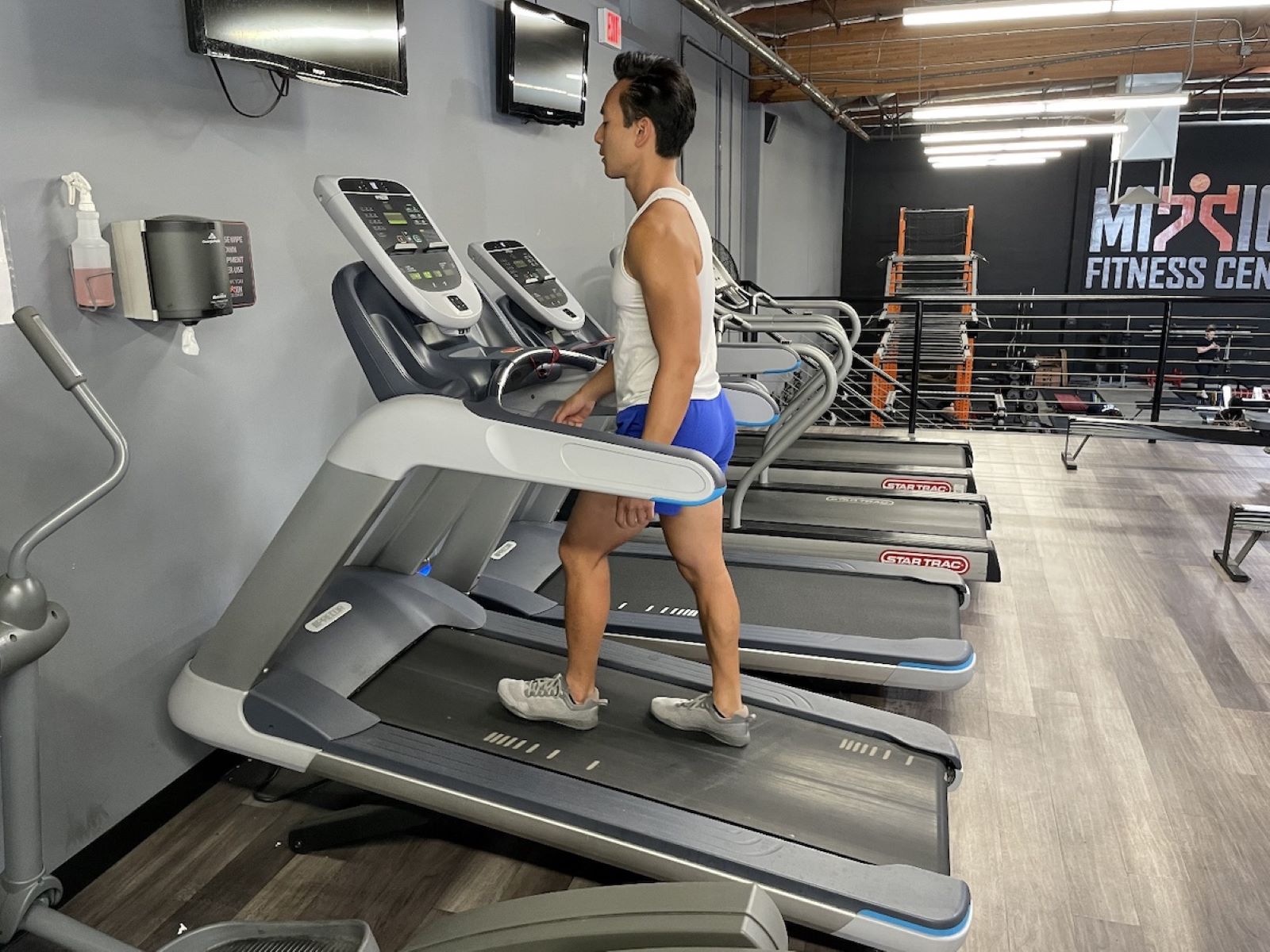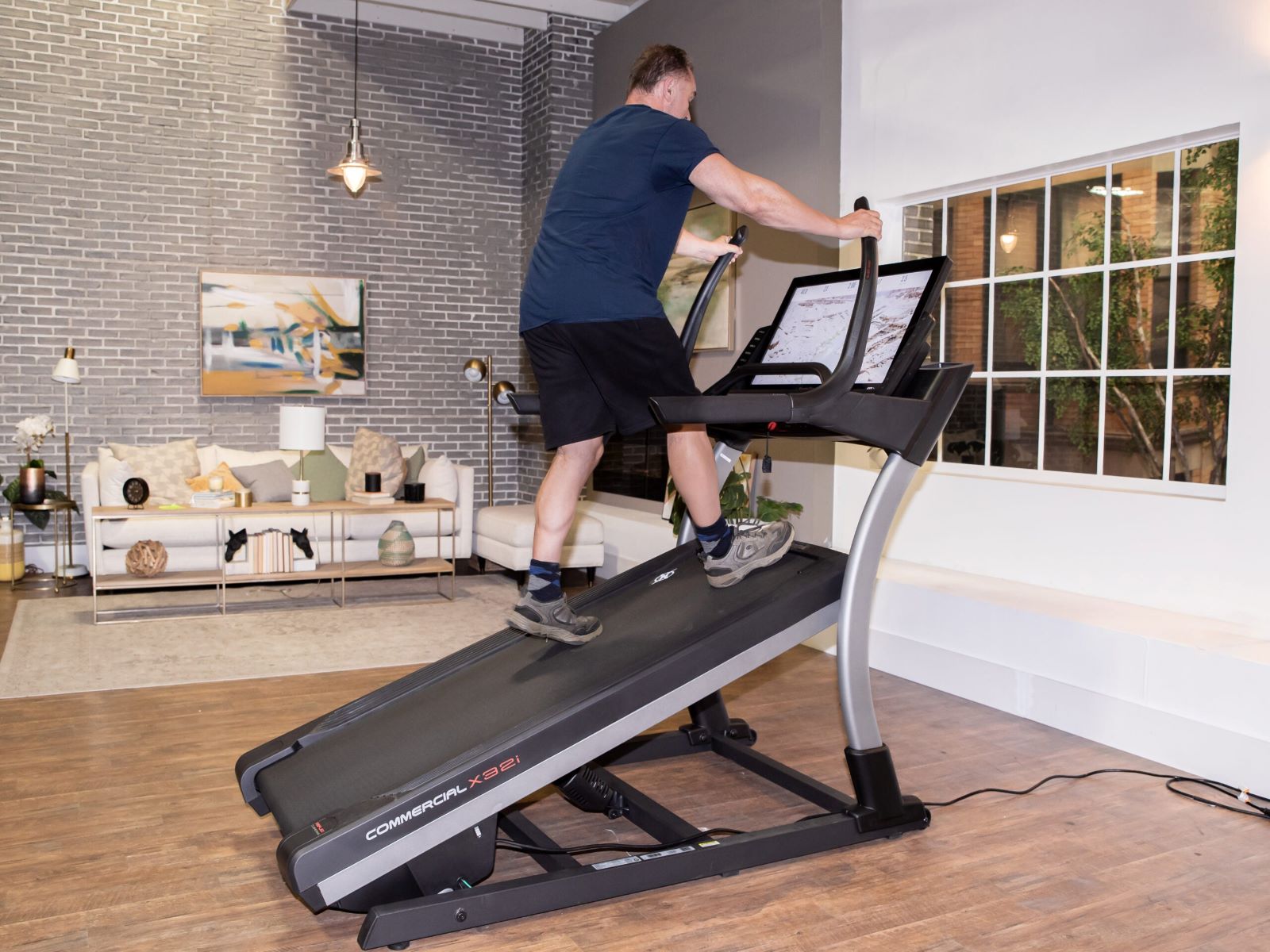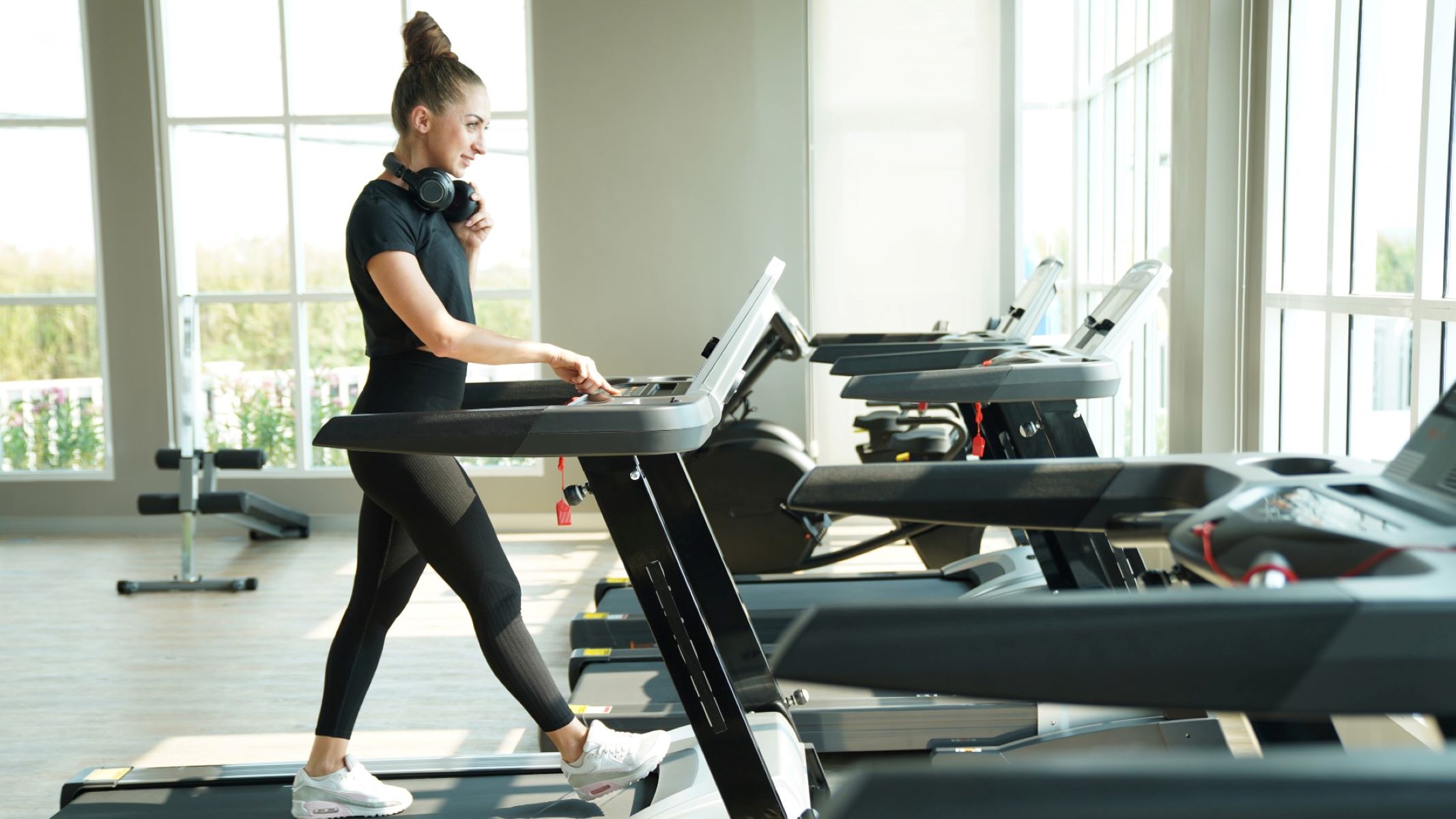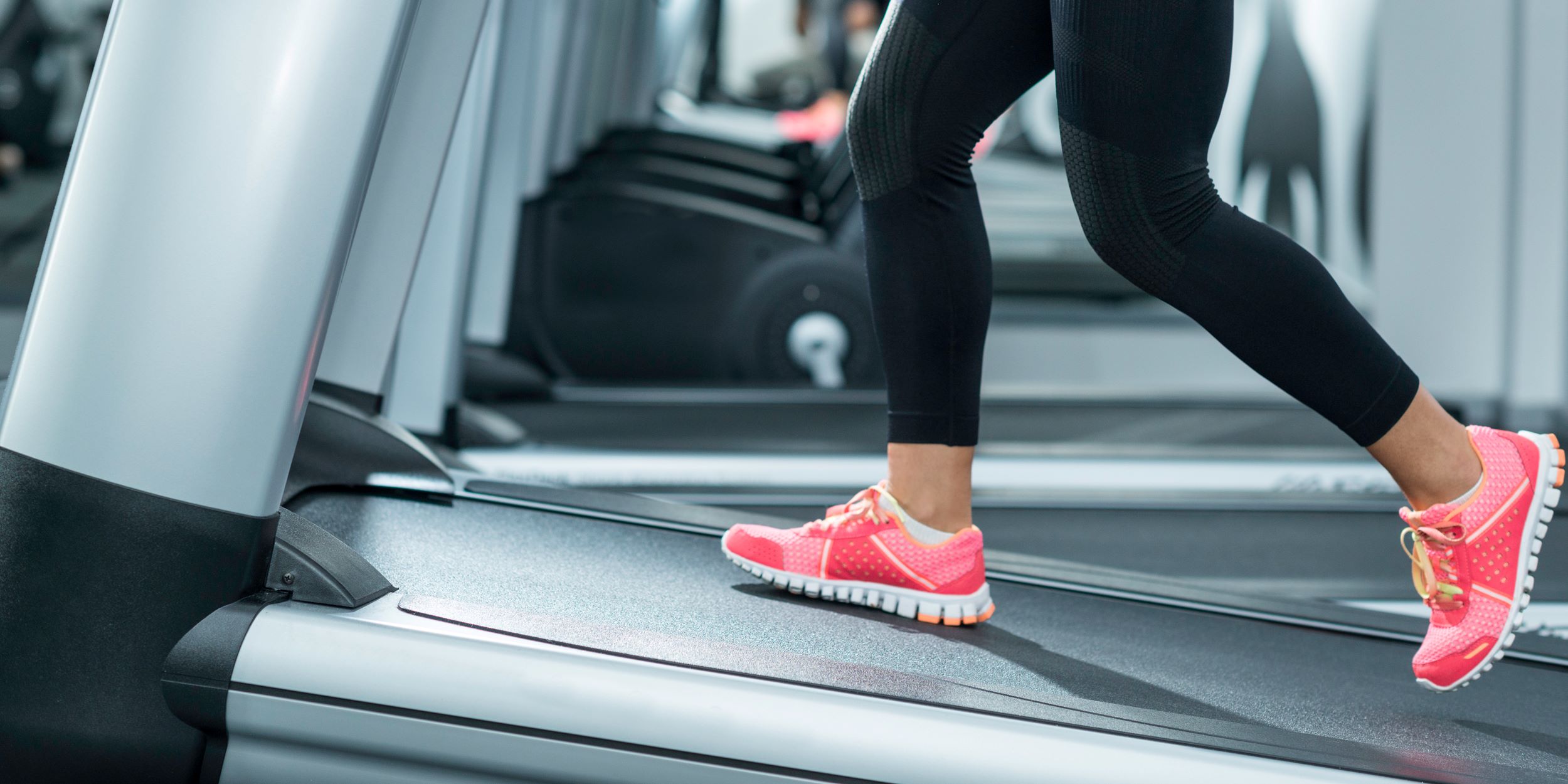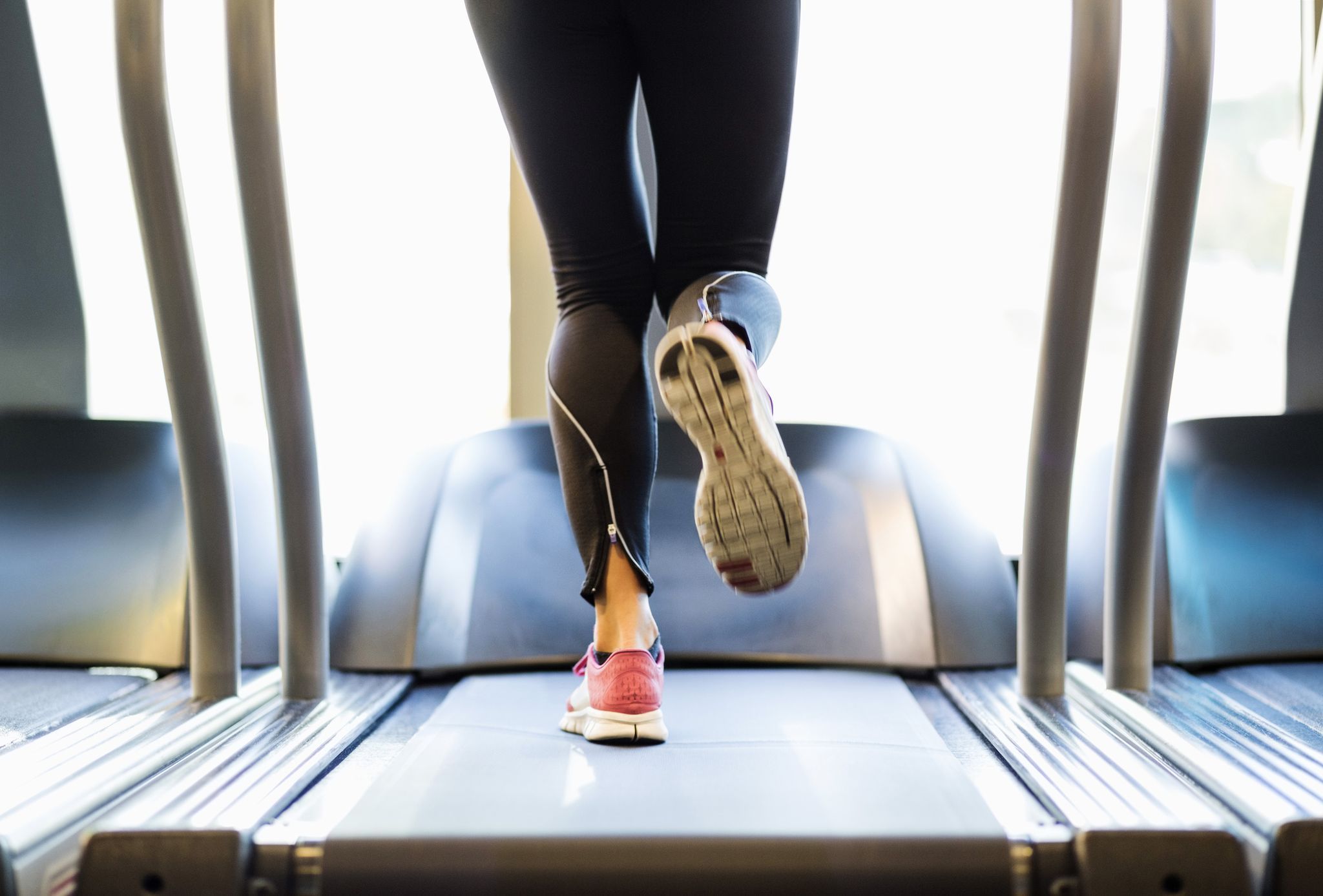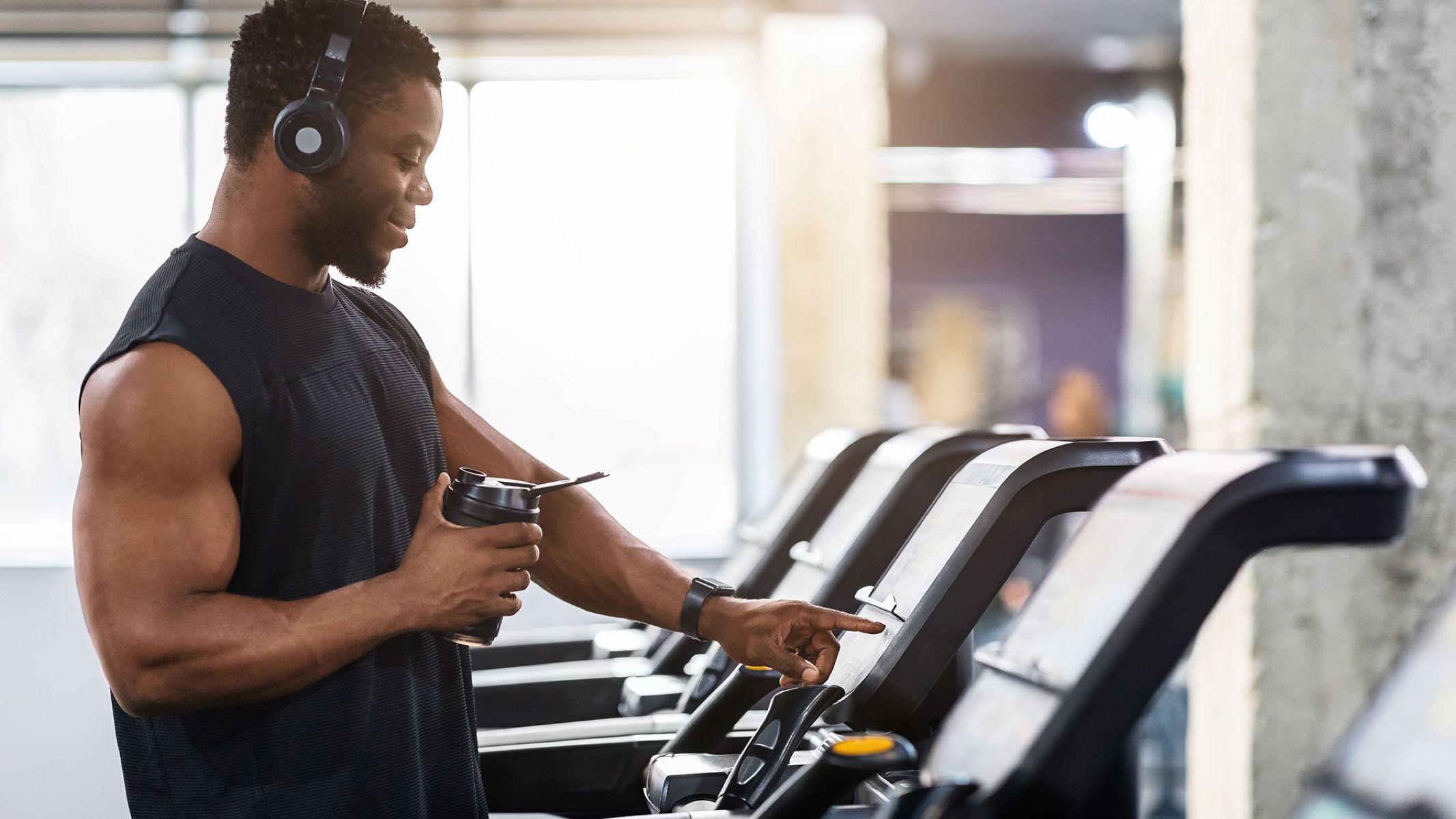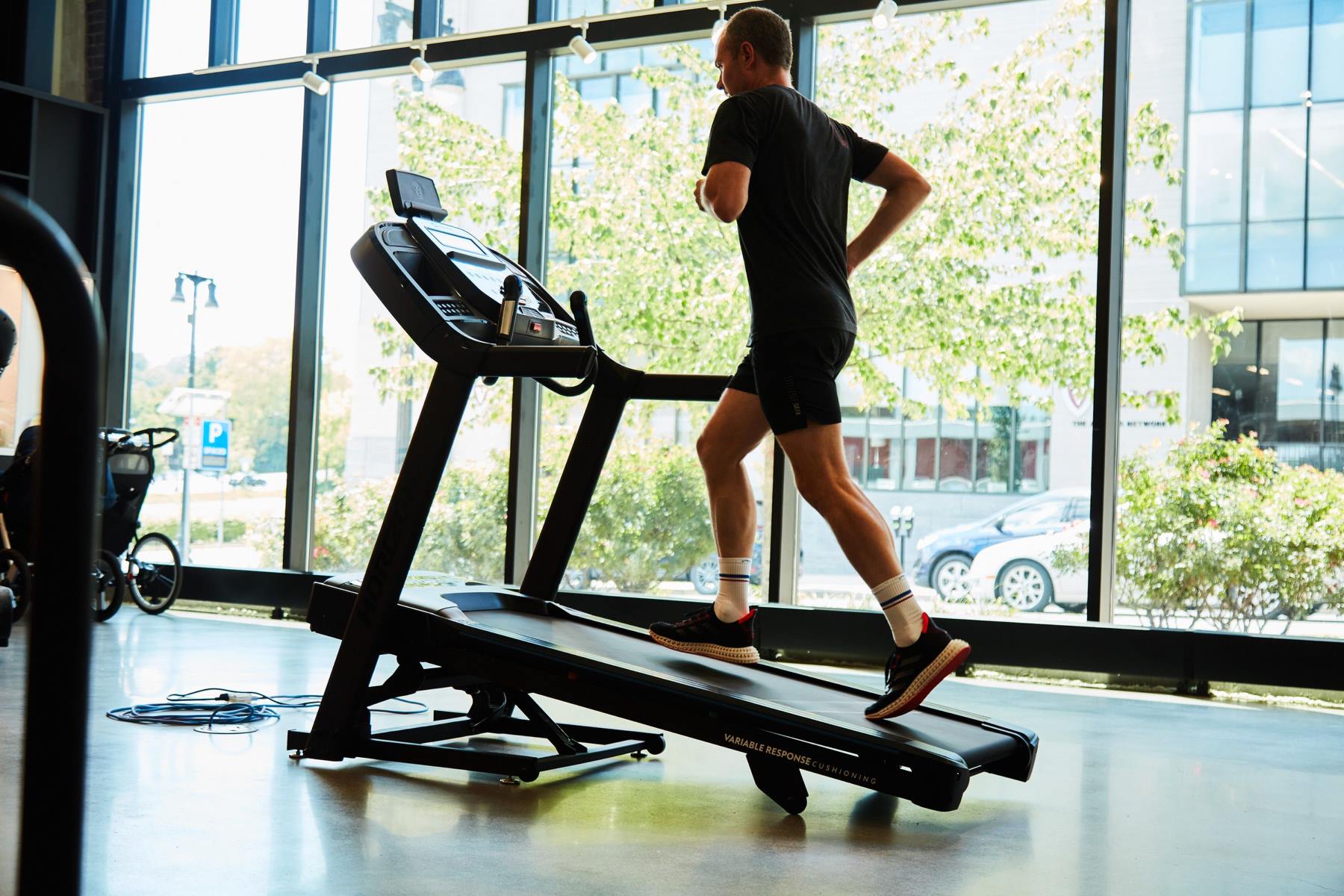

Featured
What Muscles Does Incline Treadmill Work
Modified: January 22, 2024
Strengthen and tone your muscles with Featured incline treadmill workouts that target various muscle groups, including your quads, calves, glutes, and core. Experience the benefits of incline training today!
Introduction
When it comes to staying fit and maintaining a healthy lifestyle, cardio exercises are essential. Running or walking on a treadmill is a popular way to get your heart pumping and burn calories. But have you ever considered using an incline treadmill? Incline treadmills provide an added challenge and can take your workout to the next level.
Unlike a regular treadmill, an incline treadmill allows you to raise the front of the running surface, simulating walking or running uphill. This incline feature not only adds intensity to your workout but also targets specific muscle groups in your lower body, making it a great option for those looking to tone and strengthen their legs.
In this article, we will explore the benefits of using an incline treadmill and discuss the muscles that are targeted during an incline treadmill workout. Whether you are a seasoned fitness enthusiast or just starting your fitness journey, understanding the impact of incline treadmill workouts on your muscles can help you make informed choices about your exercise routine.
Benefits of using an incline treadmill
Using an incline treadmill has several advantages that can boost your fitness level and overall well-being. Let’s explore some of the key benefits:
- Increased calorie burn: One of the primary benefits of using an incline treadmill is the higher calorie burn compared to walking or running on a flat surface. By inclining the treadmill, you engage more muscle groups and increase the intensity of your workout. This translates to a greater calorie expenditure, helping you achieve your weight loss goals faster.
- Strengthened leg muscles: Walking or running uphill on an incline treadmill targets specific leg muscles more effectively than a flat treadmill. The increased incline places greater emphasis on your quadriceps, hamstrings, glutes, and calves, helping to tone and strengthen these muscle groups. Regular incline treadmill workouts can lead to improved muscle definition and enhanced lower body strength.
- Improved cardiovascular fitness: Incline treadmill workouts provide a challenging cardiovascular workout that can improve your heart health. The incline forces your heart to work harder to pump blood to your muscles, increasing your heart rate and improving your aerobic capacity over time. This increased cardiovascular fitness can lead to better endurance and overall stamina.
- Reduced joint impact: Unlike outdoor running on hilly terrain, using an incline treadmill allows for a controlled and cushioned surface, reducing the impact on your joints. This makes it a great option for individuals with joint issues or those who are recovering from an injury. The incline feature also helps to engage the muscles around your joints, providing stability and support.
- Variety in your workout: Incline treadmills offer a range of workout options to keep your routine fresh and exciting. You can adjust the incline settings to mimic different terrains or even incorporate interval training into your workout. The ability to vary the incline levels adds an element of challenge and prevents your body from adapting to a static routine.
By incorporating an incline treadmill into your fitness routine, you can enjoy these benefits and take your workouts to new heights. Whether you’re aiming to burn calories, strengthen your lower body, or improve your cardiovascular fitness, the incline treadmill provides a versatile and effective tool for achieving your fitness goals.
Muscles targeted by an incline treadmill workout
An incline treadmill workout engages various muscle groups in your lower body, providing a comprehensive and effective workout. Let’s take a closer look at the specific muscles targeted:
- Quadriceps: The quadriceps, located in the front of your thighs, are the primary muscles targeted during an incline treadmill workout. When you walk or run uphill, the quads work hard to lift your body weight and propel you forward.
- Hamstrings: Located at the back of your thighs, the hamstrings act as antagonists to the quadriceps and play a crucial role in slowing down your leg movement during the downhill phase. The incline on the treadmill engages your hamstrings as they work to control the descent and maintain your balance.
- Glutes: The gluteal muscles, including the gluteus maximus, medius, and minimus, are the muscles responsible for hip extension. When you walk or run uphill, these muscles are engaged to push your body forward and maintain stability and control.
- Calves: The calf muscles, including the gastrocnemius and soleus, are located at the back of your lower legs. When walking or running uphill, the calves work to lift your heels off the ground, providing the necessary push to move your body forward and upward.
- Core muscles: While the primary focus of an incline treadmill workout is on the lower body, it also engages your core muscles. The core muscles, including the abdominals and lower back muscles, stabilize your body as you walk or run uphill, helping to maintain proper posture and balance.
- Hip flexors: The hip flexor muscles, including the iliopsoas, rectus femoris, and sartorius, are activated during an incline treadmill workout. These muscles help to lift your knees and bring your legs forward as you walk or run uphill.
By targeting these specific muscle groups, an incline treadmill workout provides a well-rounded lower body workout, helping to strengthen and tone your legs, glutes, and core. Incorporating regular incline treadmill sessions into your fitness routine can lead to improved muscle endurance, increased strength, and better overall balance and stability.
Quadriceps
The quadriceps, also known as the quads, are a group of four muscles located at the front of your thighs. They are responsible for extending and straightening your knee joint. When you walk or run on an incline treadmill, your quadriceps are heavily engaged to lift your body weight and propel you forward.
The incline on the treadmill places greater demand on your quads compared to walking or running on a flat surface. As you increase the incline, the quads work harder to push against gravity and move your body upward. This increased work stimulates the quadriceps muscle fibers, leading to strength development and muscle hypertrophy.
An incline treadmill workout targets the vastus lateralis, vastus medialis, vastus intermedius, and rectus femoris muscles, all of which make up the quadriceps muscle group. These muscles not only play a role in generating force but also in providing stability and balance during your exercise session.
Strengthening your quadriceps through incline treadmill workouts can provide numerous benefits. Strong quads can improve your overall leg strength, making everyday activities such as walking up stairs or getting up from a seated position easier. Additionally, strong quadriceps are beneficial for various sports and activities that involve explosive movements or powerful leg actions, such as sprinting, jumping, or playing sports like basketball or soccer.
It’s important to note that when performing an incline treadmill workout, proper form and technique are crucial to effectively engage the quadriceps while minimizing the strain on other muscles or joints. Keep your core engaged, your back straight, and your arms relaxed. Take shorter strides and maintain a consistent pace to ensure efficient quadriceps activation.
Adding variety to your incline treadmill workout by changing the incline level or incorporating intervals can further challenge your quadriceps. By adjusting the incline and intensity of your workout, you can target different aspects of quadriceps strength, such as endurance, power, or hypertrophy.
Incorporating incline treadmill workouts into your fitness routine can be an effective way to strengthen and tone your quadriceps. Remember to start at a comfortable incline level and gradually increase as your strength and endurance improve. With consistent training, you’ll notice improvements in your quadriceps strength, helping you feel stronger and more confident in your daily activities and workouts.
Hamstrings
The hamstrings are a group of muscles located at the back of your thighs. They consist of three main muscles: the biceps femoris, semitendinosus, and semimembranosus. These muscles play a crucial role in knee flexion and hip extension. When you walk or run on an incline treadmill, your hamstrings work to control the descent and maintain your balance, making them an important muscle group to focus on during incline treadmill workouts.
During an incline treadmill workout, your hamstrings act as antagonists to your quadriceps. As your quadriceps contract to extend your knee and lift your legs, your hamstrings are responsible for slowing down the leg movement during the downhill phase. This eccentric contraction of the hamstrings provides a challenging workout for these muscles and contributes to their strength development.
Walking or running on an incline engages your hamstrings more effectively compared to a flat surface. The incline forces your hamstrings to work harder to control your leg movement and maintain stability. This increased workload stimulates the muscle fibers, leading to muscle adaptation and growth.
Strengthening your hamstrings through incline treadmill workouts can bring a range of benefits. Strong hamstrings not only enhance your lower body strength but also contribute to better overall balance and stability. They play a vital role in supporting your hips and knees, reducing the risk of injuries and improving your performance in various physical activities.
Incorporating hamstring stretches into your warm-up routine before starting your incline treadmill workout can help improve flexibility and reduce the likelihood of muscle strains or injuries. Regularly stretching the hamstrings can also contribute to better posture and alleviate tightness in the lower back.
When performing an incline treadmill workout, remember to maintain proper form and technique to effectively engage your hamstrings. Focus on keeping your core engaged, your back straight, and your movement controlled. Taking shorter strides and increasing your cadence can help activate the hamstrings more effectively.
Adding variety to your incline treadmill workout by adjusting the incline level, incorporating interval training, or performing exercises like walking lunges or reverse lunges can further target and strengthen your hamstrings. Increasing the incline or adding bursts of high-intensity intervals can provide an additional challenge to your hamstrings, leading to greater strength gains.
Including regular incline treadmill workouts in your fitness routine can help develop stronger and more resilient hamstrings. As you gradually increase the intensity and level of your workouts, you’ll notice improvements in your hamstring strength, stability, and overall lower body performance.
Glutes
The gluteal muscles, commonly referred to as the glutes, are the muscles of the buttocks. They consist of three main muscles: the gluteus maximus, gluteus medius, and gluteus minimus. These muscles play a significant role in hip extension, abduction, and rotation. When walking or running on an incline treadmill, your glutes are engaged to push your body forward and maintain stability and control.
An incline treadmill workout specifically targets and activates your gluteal muscles. The incline forces your glutes to work harder compared to walking or running on a flat surface. As you walk or run uphill, your glutes contract to propel your body forward and upward against the force of gravity. This increased activation stimulates the gluteal muscle fibers, leading to muscle growth and strength development.
Strong glutes offer numerous benefits, including improved lower body strength, enhanced athletic performance, and better overall posture. The glutes provide stability and power for various activities such as running, jumping, and lifting. Developed gluteal muscles can also help alleviate lower back pain and prevent injuries by properly aligning the hips, pelvis, and spine.
When performing an incline treadmill workout, it is important to focus on proper form and technique to effectively engage your glutes. Make sure to maintain an upright posture, engage your core, and avoid leaning forward too much. Concentrate on pushing through your heels and activating your glute muscles as you walk or run uphill.
If you want to specifically target your glutes during your incline treadmill workout, you can adjust your stride and pace. Taking longer strides and increasing your cadence can further engage your glute muscles. Additionally, incorporating exercises like walking lunges or lateral lunges can provide a more targeted glute workout when combined with your incline treadmill routine.
Adding variety to your incline treadmill workout by adjusting the incline level and incorporating interval training can also challenge your glutes in different ways. Increasing the incline will further engage the glute muscles, while intervals of increased speed or incline can provide an added challenge and lead to greater muscle activation and development.
Incorporating regular incline treadmill workouts into your fitness routine can help you develop stronger and more powerful glutes. As you progress and increase the intensity of your workouts, you will notice improvements in your glute strength, stability, and overall lower body performance.
Calves
The calf muscles, located at the back of the lower leg, are composed of two main muscles: the gastrocnemius and the soleus. These muscles are responsible for plantar flexion, which is the action of pointing your toes downward. When walking or running on an incline treadmill, your calf muscles work to lift your heels off the ground and provide the necessary push to move your body forward and upward.
An incline treadmill workout specifically targets and engages your calf muscles. The incline requires your calves to work harder compared to walking or running on a flat surface. As you walk or run uphill, your calf muscles contract to lift your body weight, generating the force needed to move you forward against the resistance of gravity. This increased workload leads to muscle adaptation and growth in the calf muscles.
Strengthening your calves through incline treadmill workouts can bring a range of benefits. Strong calves can improve your overall lower body strength and power, making activities such as jumping, sprinting, or running uphill easier. Developed calf muscles also contribute to better balance and stability by providing support to your ankles and lower legs.
When performing an incline treadmill workout, it is important to focus on maintaining proper form and technique to effectively engage your calves. Keep your core engaged, your back straight, and your movement controlled. Concentrate on pushing off through the balls of your feet to activate the calf muscles and achieve a more efficient and effective workout.
If you want to specifically target your calf muscles during your incline treadmill workout, you can adjust your stride and pace. Taking shorter, quicker strides and increasing your cadence can intensify the workout for your calves. Additionally, incorporating exercises like calf raises or heel drops off the edge of the treadmill can provide a more targeted calf workout when combined with your incline treadmill routine.
Adding variety to your incline treadmill workout by adjusting the incline level and incorporating interval training can also challenge your calf muscles in different ways. Increasing the incline will further engage the calf muscles, while intervals of increased speed or incline can provide an added challenge and lead to greater calf muscle activation and development.
Including regular incline treadmill workouts in your fitness routine can help you develop stronger and more resilient calves. As you gradually increase the intensity and level of your workouts, you’ll notice improvements in your calf strength, power, and overall lower body performance.
Core muscles
Your core muscles play a crucial role in providing stability and support during movement, including walking or running on an incline treadmill. The core muscles consist of various muscles, including the rectus abdominis, transverse abdominis, obliques, and back muscles. Engaging your core during an incline treadmill workout is essential for maintaining proper posture, balance, and overall body control.
While the primary focus of an incline treadmill workout is on the lower body, it still provides an opportunity to engage and strengthen your core muscles. As you walk or run uphill, your core muscles are activated to stabilize your body and maintain proper alignment. This engagement ensures that your upper body is aligned with your lower body, minimizing unnecessary movements and reducing the risk of injury.
Engaging your core during an incline treadmill workout involves consciously contracting the abdominal muscles, drawing your navel toward your spine, and maintaining an upright posture. By doing so, you activate the muscles in your abdomen, lower back, and even the muscles along the sides of your torso, resulting in improved core strength and stability.
Having a strong core is beneficial for various reasons. It helps improve your overall functional fitness, enables better balance and coordination, and enhances your posture. A strong core also serves as a foundation for other movements and exercises, allowing you to generate more power and efficiency during physical activities.
To target and engage your core muscles during an incline treadmill workout, focus on maintaining proper posture throughout the exercise. Keep your back straight, avoid leaning too far forward or backward, and engage your abdominal muscles. It is also important to maintain a controlled and steady pace, allowing your core muscles to work in a controlled and balanced manner.
Adding variety to your incline treadmill workout by incorporating exercises like oblique twists, standing side bends, or planks can provide a more targeted core workout. These exercises can be performed at the end of your incline treadmill session or as a separate workout to further strengthen and tone your core muscles.
Including regular incline treadmill workouts in your fitness routine not only improves lower body strength but also contributes to the development of a strong and stable core. As you continue to challenge your body with incline workouts, you’ll notice increased core strength, improved balance, and enhanced overall body control.
Hip flexors
The hip flexors are a group of muscles located at the front of your hip joints, including the iliopsoas, rectus femoris, and sartorius muscles. These muscles are responsible for flexing and lifting your legs, allowing you to walk, run, and perform various lower body movements. During an incline treadmill workout, your hip flexors play a crucial role in lifting your knees and bringing your legs forward as you walk or run uphill.
An incline treadmill workout engages your hip flexor muscles more effectively compared to walking or running on a flat surface. As your body tilts upward on the incline, your hip flexors are required to generate greater force to lift your knees and move your legs forward against the resistance of gravity. This increased activation helps to strengthen and tone the hip flexor muscles.
Strong hip flexors offer several benefits. They contribute to better overall lower body strength, promote improved running and walking efficiency, and enhance your ability to perform explosive movements or activities that involve lifting your knees. Strong hip flexors also play a role in maintaining proper posture, providing stability to the pelvis, and reducing the risk of lower back pain.
When performing an incline treadmill workout, it’s important to focus on engaging your hip flexors. This can be done by consciously lifting your knees and driving your legs forward as you walk or run uphill. Maintaining good form and a controlled stride allows you to effectively activate the hip flexor muscles and maximize their benefits.
In addition to incline treadmill workouts, incorporating exercises that specifically target the hip flexors, such as standing leg lifts or hanging leg raises, can help strengthen and further develop these muscles. These exercises can be performed as a complement to the incline treadmill workout or as a separate workout session.
It’s worth noting that maintaining flexibility in your hip flexors is also important. Regular stretching exercises, such as the kneeling hip flexor stretch or the butterfly stretch, can help improve flexibility, prevent muscle imbalances, and reduce the risk of injuries.
By incorporating incline treadmill workouts and targeted hip flexor exercises into your fitness routine, you can develop stronger, more flexible, and more efficient hip flexor muscles. As you progress in your training, you’ll notice improvements in your lower body strength, running efficiency, and overall performance in various physical activities.
Conclusion
Incline treadmills offer a unique and effective way to elevate your cardio workouts and target specific muscle groups in your lower body. By using an incline treadmill, you can experience a range of benefits, including increased calorie burn, strengthened leg muscles, improved cardiovascular fitness, reduced joint impact, and added variety to your workout routine.
An incline treadmill workout specifically targets several key muscle groups in your lower body. The quadriceps, hamstrings, glutes, calves, core muscles, and hip flexors are all actively engaged and challenged during an incline treadmill session. Strengthening and toning these muscles can lead to improved muscle definition, enhanced stability, and better overall performance in physical activities.
It’s important to approach incline treadmill workouts with proper form and technique. Keep your core engaged, maintain a balanced posture, and adjust the incline level to suit your fitness level and goals. Gradually increase the intensity and challenge of your incline workouts as your strength and endurance improve.
Adding variety to your incline treadmill workouts by adjusting the incline level, incorporating interval training, or performing targeted exercises for specific muscle groups can enhance the effectiveness of your workouts and keep you motivated.
Remember to listen to your body and take rest days as needed. If you have any existing medical conditions or concerns, it’s always best to consult with a healthcare professional or fitness expert before starting a new exercise routine.
Incorporating incline treadmill workouts into your fitness routine can provide numerous benefits for your overall health and well-being. Whether you’re a seasoned fitness enthusiast or just starting your fitness journey, the incline treadmill can be a valuable tool to help you achieve your fitness goals and maximize your workout efficiency.
So, why wait? Lace up your shoes, adjust the incline, and get ready to elevate your fitness journey with an incline treadmill workout!
